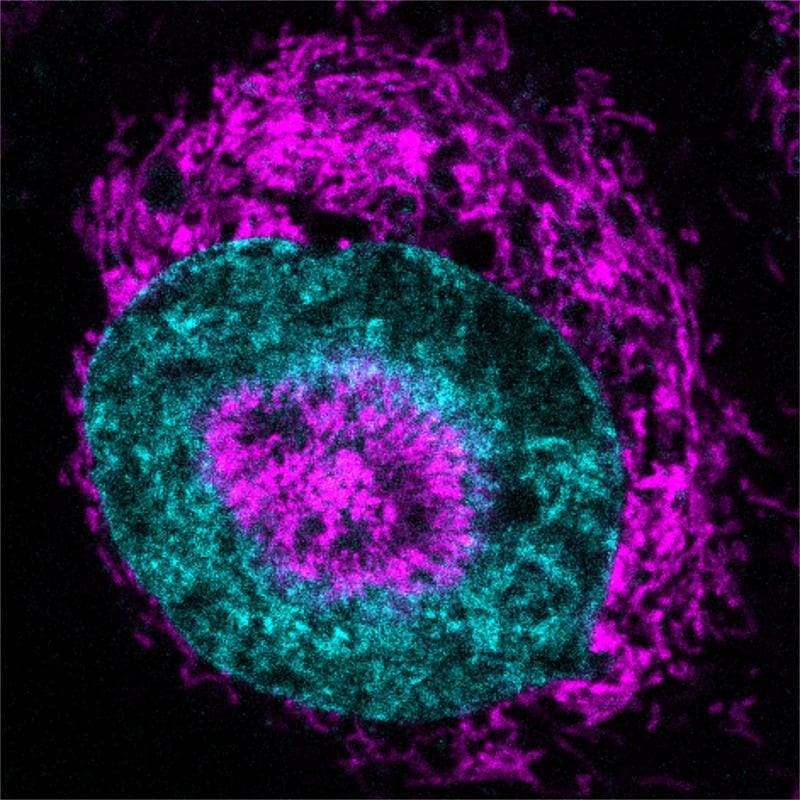Cancer cells under pressure use energy boost for DNA repair
A research team from the University of Innsbruck and the Centre for Genomic Regulation in Barcelona has discovered a novel protective mechanism of cancer cells that triggers a surge of energy under mechanical pressure. The study, published in Nature Communications, shows how cancer cells increase their energy production under stress to repair DNA damage and survive in confined body environments.
Using modern microscopy methods and biomimetic tissue stress, in which cells were compressed to three micrometers, the team observed that mitochondria in HeLa cancer cells immediately migrate to the nucleus and provide additional ATP. These accumulations, known as nucleus-associated mitochondria (NAMs), were detected in 84 percent of the compressed cells, whereas they hardly occurred in uncompressed cells. A fluorescent sensor showed a 60 percent increase in ATP in the cell nucleus within seconds. This energy boost enables ATP-dependent repair processes that repair DNA damage caused by mechanical stress.
“This forces us to rethink the role of mitochondria in the human body. They are not static batteries that supply our cells with energy, but rather agile first responders that can be summoned in emergencies when the cells literally reach their limits,” says Sara Sdelci from the CRG in Barcelona.

In the breast cancer tissue of patients, NAMs were three times more frequent at tumor borders than in the tumor core. Actin filaments and the endoplasmic reticulum stabilize the NAMs, while their blockade by latrunculin A stops the energy surge.
The discovery opens up new approaches to inhibit tumor spread by disrupting the cell scaffold without damaging healthy tissue. The mechanism could also be relevant for other cell types such as immune or embryonic cells that are exposed to similar mechanical stresses.
Original Paper:
Editorial office: X-Press Journalistenb├╝ro GbR
Gender note. The personal designations used in this text always refer equally to female, male and diverse persons. Double/triple references and gendered designations are avoided for the sake of better readability ected.




